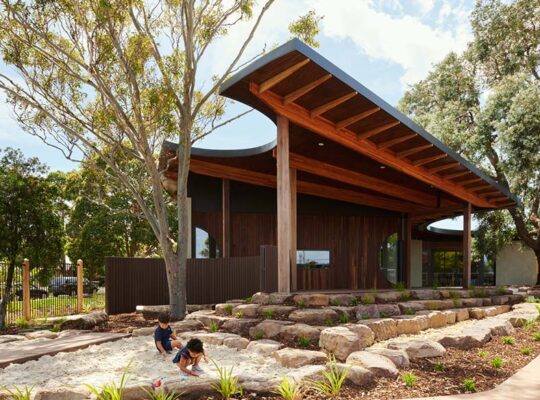The House in Aokibashi stands as a testament to the art of renovation, breathing new life into an old apartment building overlooking the former Tokaido Kanagawa-juku. Designed by Shinta Hamada Architects, this project embraces the surrounding environment and infuses the interior with natural light, creating an impressive space that defies its central city location.

Embracing the Old
As the demolition work commenced, the architectural team encountered a 47-year-old rough concrete skeleton and a prominent girder traversing the house. Despite the challenges posed by the low height under the girder, a mere 1.9 meters, the architects saw an opportunity to harness the inherent character of the space and integrate it into the new design.
Spatial Reimagination
The first step was to strategically position two private spaces at opposite ends of the complex floor plan, with a communal area nestled between them. By orienting the walls separating the rooms perpendicular to the outer walls, the architects achieved a sense of openness to the exterior while establishing a harmonious rhythm within the interior spaces.

Blurring Boundaries
To fully exploit the corner location and the openness it afforded, the architects situated storage units and water areas along the boundary walls, creating an illusion of continuity between the interior and exterior. By incorporating floor levels at three different heights, a seamless connection was forged from the elevated private spaces to the communal areas and ultimately to the outdoor environment.
Harmonizing Change and Tradition
The design philosophy behind the House in Aokibashi revolves around embracing both the dynamic nature of the surrounding environment and the enduring presence of the old skeleton. This approach has culminated in the creation of an enigmatic space that blurs the distinction between indoors and outdoors, inviting inhabitants to immerse themselves in the ever-changing landscape while honoring the architectural heritage of the past.

















